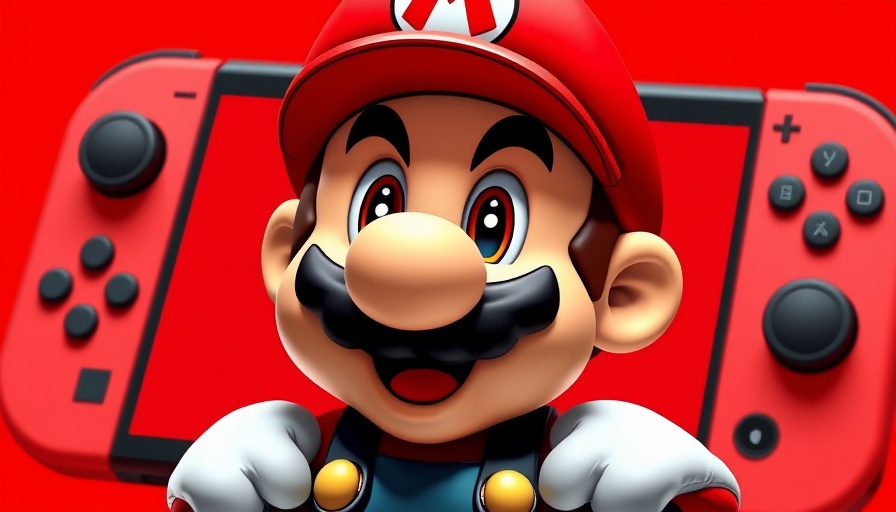
Nintendo's Legacy: From Affordability to Premium Pricing
Nintendo has been a stalwart in the gaming industry for over 40 years. What set it apart from competitors like Sony and Microsoft was not just its iconic characters or ability to innovate but a steadfast commitment to affordability. The original Nintendo Switch, launched in 2017, was not only a gaming revolution but also an economic option compared to its contemporaries, with a launch price of $299. This spirit of accessibility often drew in families looking for a gaming solution that didn’t break the bank.
As we transition into the world of 2025, the landscape has dramatically shifted. With the release of the Switch 2, there is a palpable sense of nostalgia tinged with apprehension. Priced at a jaw-dropping $449, it raises the question: has Nintendo lost its identity in favor of competing with larger graphics-driven rivals?
The Price Hike: What Does It Mean?
At first glance, the Switch 2 might appear worth its price tag. Its advanced LCD screen and the promise of 4K gaming seems enticing, especially to diehard fans eager for the latest installments of beloved franchises like The Legend of Zelda and Animal Crossing. However, this leap in price reflects a broader trend in the gaming world—premium pricing for premium features.
In past years, gamers saw Nintendo as a reliable choice for budget-friendly entertainment. Now, consumers might feel conflicted about whether to invest in a system that demands a higher upfront cost, especially when competing consoles are also vying for their attention. This could potentially alienate long-time supporters who prioritized accessibility and family-friendly gaming experiences.
The Impact of Inflation on Gaming
One must also consider the economic landscape. Inflation has prompted price hikes across virtually every sector, including the gaming industry. As consoles become increasingly advanced, the costs associated with development, production, and even marketing have pushed companies to rethink their pricing strategies. While the old Nintendo might have prioritized affordability, the new landscape suggests that the gaming giant is now responding to these market pressures.
With the new Mario Kart game debuting alongside the Switch 2 at a staggering $80, a trend emerges where consumers must weigh their desires against their budgets. Are we moving towards a gaming industry where high prices are normalized, just as we see in other entertainment sectors?
The Allure of New Features Versus Nostalgia
Revisiting Nintendo's heritage provides insight into how the company's evolution mirrors larger shifts in consumer culture. The Wii, launched over a decade ago, was not just a console but a social experience, particularly in family environments. It allowed individuals of all ages to connect through the revolutionary motion controls, a family-oriented approach embodied in its popular bundled game, Wii Sports.
Now, as families look for inclusive entertainment options, the disconnect becomes evident. With higher prices, the Switch 2 may not foster the same community engagement that once drew multigenerational players together. This evolution can leave fans longing for the era when gaming was more about shared experience and less about cutting-edge specs.
The Future of Gaming: What Lies Ahead?
So where does this leave gamers and Nintendo's future? As long as technology continues to improve, we may see even more premium-priced consoles that require users to reassess their gaming expenditures. The increased investments may yield impressive graphics and experiences, yet the original sentiment of being a family-friendly, budget-conscious brand may fade.
What is crucial now is how Nintendo approaches this pivotal moment in its history. Will the company still prioritize creating games that cater to all audiences? Will they maintain that family-friendly focus that has traditionally separated them from their competitors? Ultimately, it is a delicate balancing act that could shape the future of gaming.
Conclusion: Reflecting on Change and Choice
The release of the Switch 2 signifies more than a new console; it marks a potential turning point for Nintendo. Whether fans embrace the change or seek nostalgia-driven alternatives hinges on the company's ability to navigate this pricing evolution while remaining true to its identity. As gaming advances, one can only hope that it maintains that original spirit of joy and accessibility—even as console prices soar.
If you’re contemplating whether to invest in the new Switch 2 or holding out for something more affordable, think critically about what value and experiences mean for you and your family. The future of gaming will depend on the choices we make today.
 Add Row
Add Row  Add
Add 




Write A Comment